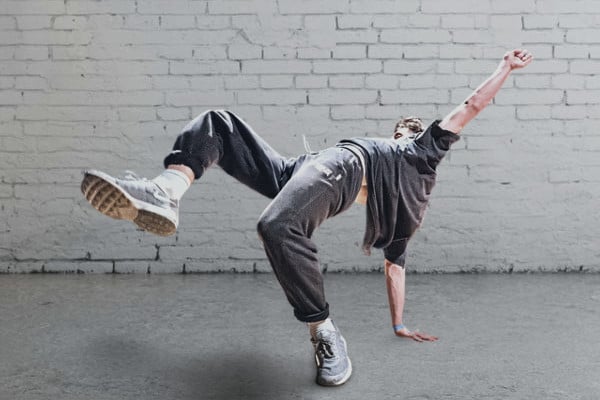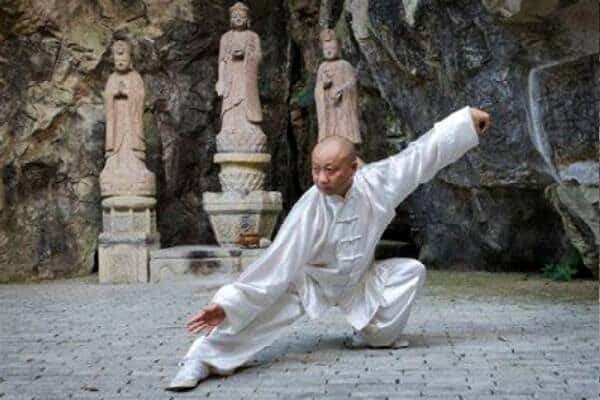What exactly does it mean to move while in mediation? Learn how to use this concept to turn everyday actions into a meditative process.
Moving Meditation Techniques
When most people hear the term meditation, they think of someone sitting with their eyes closed. When you add the term moving along with meditation, people get confused because most people don’t understand meditation has both seated and moving forms. Stationary forms are the standard in the West. It is just as beneficial to learn to move in a meditative state.
We define moving meditation practices as being aware of the mind, body, and surroundings while in motion. It is a movement that fully engages our attention. Therefore, it is a change in perception accompanied by action.
Motive meditation comes with some health benefits. It helps improve mind-body coordination. It reduces internal chatter, enabling us to become fully present, alert, and calm. It reduces stress, generating positive energy. We can create our own meditation forms while engaging in an activity once we learn how these elements work. We’ll discuss how to do this later: how to create your path.
Benefits of Moving Meditation Practices
The practice of active meditation helps us move beyond our Ego’s default settings. Our Ego is a necessary tool of consciousness, providing a default structure on which to learn about our bodies. Our Ego is the default setting. Through it, we learn to understand language and develop social connections.
Unfortunately, many people never move beyond this default setting. They live under the false idea they are their personality. It creates tunnel vision. As a result, we are not fully present. We lose our sense of self and only see the task at hand. It makes use present and returns a genuine sense of self. It helps restore us to our original state, a state of innocence.
Design Your Spiritual Path
The practice of moving meditation techniques is one of the main components of spiritual exploration. Researching consciousness is the focus of many ancient cultures. They are many pioneers around the globe from which we gather the techniques we use today. This suite of methods includes a vast range from simple mindfulness through an array of distinct forms of the eightfold path of Yoga.
There’s probably at least one of these moving meditation practices which are right for you. If you can’t find one, you can likely create one to fit your needs.
George Gurdjieff (1) is a good example. He developed a system based on complex mindful movement. These Gurdjieff movements need a high level of focus.
There are many forms of the Shamanic Journey. Some use dance to enter an altered state of awareness; you can find forms of spiritual dancing all over the world. Some forms are incorporated into rituals, such as in the practice of voodoo in South America and the Caribbean. These spiritual dances make their way into Western organized religion in what they call “spirit dancing.” You’ll see people dancing in circles while chanting in many cultures.
Why Expand Awareness?
The expansion of awareness facilitates our growth and development. The use of these techniques expands awareness by coordinating mind and body. The more you use them, the more aware you become of your thoughts and body. It moves us along the continuum of consciousness.
Tai Chi as a Moving Meditation
Tai Chi benefits your health. It’s a way of aligning the mind and the body. Thus, it has become a popular element of wellness. However, all forms of this practice originate from Eastern martial arts. Many commercial forms of this art are devoid of combat applications, and some structures have progressions incorporating acrobatic movements. Tai Chi has many options from which to choose.
The slower tempo of Tai Chi as a moving meditation techniques make it easy to learn while protecting you from injury. However, some forms have quicker bursts of movement — Indonesian of Tai Ke, for instance. People can learn the Jurus without understanding the martial application. It’s a standard tactic among the most experienced teachers. The master teaches the principles of movement but holds back the martial art applications, for only those they trust will not abuse the art.
It’s possible to learn the basics of the art via video. However, the best results come from face-to-face instruction, where a qualified instructor can help you align properly. Virtual sessions are also helpful but not as good as face-to-face. Practicing in front of a mirror is also beneficial because the way we “think” we are moving may differ from how we are moving. It’s a frequent error. Many other forms of active meditation are easier to learn.
Qigong
Qigong is a popular group of moving meditation techniques that generate energy. It combines specific kinds of breathing with isometric muscle movement. It causes glands to release various hormones. Qigong is more static and less fluid and graceful than typical Tai Chi movement to the untrained observer. It is like Tai Chi.
The practice of Qigong creates both spiritual and physical energy, so Qigong is the engine for both healing and martial arts applications. It is not surprising that martial artists are also some of the best healers.
It is standard to practice Qigong with Tai Chi together or in a sequence. They typically use Qigong first, then Tai Chi afterward to practice the projection of this energy. Some Indonesian forms blend Qigong and Tai Chi concepts into one package.
Many systems of martial arts training incorporate active meditation with their art; those who train for combat spend hours cultivating a state of mindfulness under duress combat. Remaining mindful during a physical confrontation is not easy.
Dance of Silat
Silat is in a martial arts class by itself; it is distinct from all others in its approach to training and martial applications. The classical style combines circular and straight-line movements punctuated by slapping and abrupt changes in direction. The movements of silat do not have the distinct start and stop movements we associate with Japanese and Korean forms. Some methods, like Tai Ka, look almost identical to tai chi.
Those who train in this art use a variety of techniques to maintain emotional equilibrium during a physical confrontation. It is considered one of the advanced-level moving meditation practices.
Mindfulness in Motion
Mindfulness is a term with different meanings. We define mindfulness as being aware and present. When we are present, our internal dialogue slows or stops. Mindfulness in motion helps us bring the silence and peace of the transcendent into any activity. Sweet.
Tai Chi and Qigong can do this if done correctly. The Japanese Tea Ceremony is a formalized method for achieving mindfulness, but it takes time and study. However, there are other ways to do this.
There are two types of techniques for mindfulness meditation. It begins with a seated meditation exercise, which builds to one of the most effective moving meditation practices. You learn the process while sitting and then bring it into motion. It’s perhaps the easiest method because you do not have to follow any set movement pattern. You are free to observe your body and surroundings. You keep a heightened level of presence level while in motion. This is the key to creating your “own” form of active meditation. Those who study martial arts use several exercises to keep them fully present. You must be able to resist powerful emotions like fear and anger.
Common Moving Meditation Techniques
Take a Walk
First, walking is the easiest of all movements to make into active meditation. It’s the easiest way to carry the meditative focus into action. The basic progressions for mindfulness start with seated meditation, where you bring awareness fully into your body. Then you can take this awareness into the walking mindfulness technique. Follow the above links to learn these progressions.
Go Running
The next obvious progression from walking is running. Unfortunately, many people miss the opportunity to engage in this level of mindfulness when they listen to music while exercising. However, this activity often creates the exact opposite effect of mindfulness. Listening can distract your attention and create “tunnel vision.” It will shift the focus on entertaining the Ego or analytical tasks. When we fixate on something, it is harder to expand our focus to our bodies and surroundings.
Tai Chi & Qigong
After learning primary moving meditation techniques, it’s time for more adventurous methods. Tai Chi and Qigong are good progressions.
Dance Movements
You can add mindfulness meditation to dance movements. Begin your mindfulness meditation practice, then stand up and start walking. Once you are comfortable with this, start dancing. Finally, add music once you can maintain the mindfulness mindset while dancing. If done correctly, it will induce a trance-like state we find in shamanic practices around the globe.
Shamanic Dance with Drum creates a level of mindfulness. There are typically several people dancing. It can be distracting, so it’s not for the beginner. However, you can attend a session and work your way up. Start by sitting with your eyes closed using the seated mindfulness technique. Then the next step is opening the eyes. If you can maintain your mindfulness, then stand and walk. You should be able to hold the mindfulness meditation technique while walking. Once you master walking, you can start dancing.
The Healing Arts
Many healing arts are both an outlet for your mindfulness and a way of helping others. And if your work involves non-injurious repetition, this might be a candidate.
Create Your Path
First, It’s essential to have a firm basis with seated and moving mindfulness meditation techniques before creating your own. It will give you a platform for building your practice. The more physically challenging the activity, the more difficult it will be to attain and maintain mindfulness.
Next, select a fluid movement. Be sure you have adequate space to move and maintain a heightened awareness. The best things are the activities you know by heart. These are things where you develop muscle memory. Skiing and swimming are examples of this type of fluid action.
Be sure to keep track of your experience in your spiritual journal. Track your progress. People find they master things they could never do before. Sometimes it takes time to learn how to hold a state of mindfulness while engaging in an activity. Then you can take it with you into other parts of your life. Last, experiment with it. See what works and what does not.
Final Thoughts
Our mind is an incredible instrument of perception. It is capable of much more than popular culture wants us to believe. Our bodies are home to deep wisdom and intelligence hidden within our DNA. It’s the gifts from our ancestors. We can accomplish many things when we use our minds and body together. All it takes is practice. We recommend you pick at least one of these moving meditation techniques to expand your spiritual practice.
References
(1) George Gurdjieff, Wikipedia



